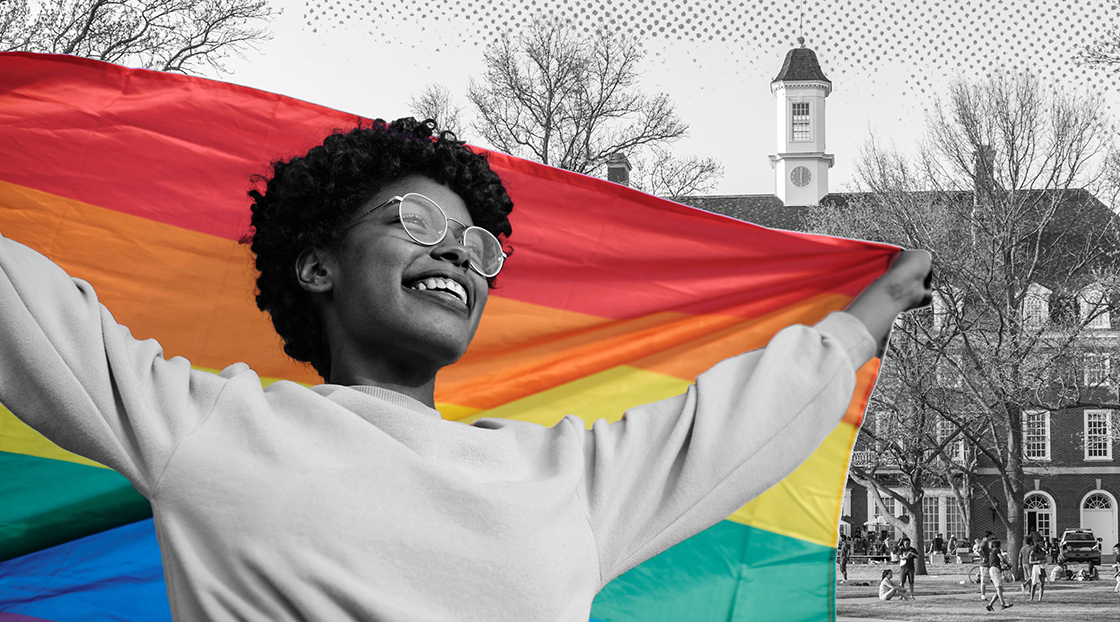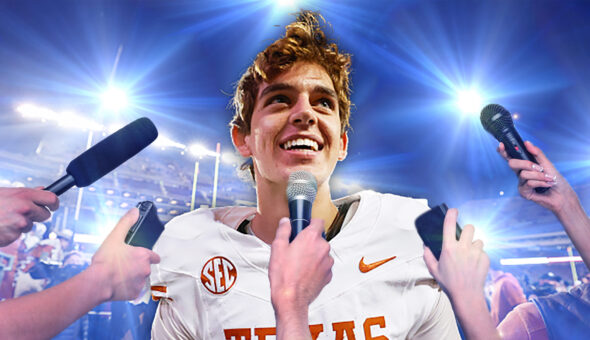During the past decade, the LGBTQ+ community has increased visibility rather than numbers, with approximately 21% of Gen Z identifying as such and many advocates proudly dubbing the young generation as the “gayest” in history. With such a sizable cultural shift and newfound visibility, how can higher ed continue to be a bastion of self-discovery and inclusion while ensuring students’ personal information and privacy are protected?
According to Laurie Kohler, vice president of marketing and enrollment strategy at Ithaca College, marketing campuses as “safe spaces” does not insinuate that schools need to insulate classrooms with “rainbow padding.” Instead, she said colleges should “make high school students think, ‘I can see myself there.’”
Many universities have sections during the admissions process that allows students to disclose their gender and sexuality, as well as enable them to add preferred names and personal pronouns. Deciding to use preferred pronouns and names on school documents can be a complicated decision for many students.
A 2021 study found that a third of the students who participated decided not to disclose their sexual identities for reasons unrelated to the institutions. Many were unsure of their identities or did not see them listed. Director of Ithaca College’s Center for Lesbian, Gay, Bisexual and Transgender Education, Outreach and Services Luca Maurer said the decision to self-identify openly is in the hands of the student and not the institution. It is the institution’s responsibility to ensure that all students are provided an opportunity to do so.
“If you’re not counted, you don’t count,” said Maurer.
Other reasons to forego self-disclosure include disapproving families and the student’s inability to accept themselves. It is impossible to determine precisely how many students identify as LGBTQ+ because human sexuality is a complicated topic regarded as private for most people.
Maurer also noted that many students seeking schools like Ithaca College are fleeing states and countries with hostile perceptions or policies toward the LGBTQ+ community. Following a series of hate crimes against the LGBTQ+ community, the Department of Homeland Security issued a terror advisory on November 30, 2022. It is more important than ever to market campuses as safe spaces for all students.
Simply put, there is no cut-and-dry method for respecting pronouns while keeping students safe. It is the school’s job to honor and respect the decisions they make for their safety. Although the data collected on LGBTQ+ students can be beneficial, Maurer argued that it is not always necessary.
“What I think is necessary is that institutions in higher ed, in general, need to move from accepting that there are LGBTQ students to expecting them,” said Maurer. He disclosed that, according to the National Survey of Student Engagement, approximately 33% of Ithaca College’s student body self-identify as LGBTQ+. Achieving numerical diversity is only a fraction of what it takes to move from accepting to expecting.
As of 2020, the LGBTQ+ community held a reported buying power of more than one trillion dollars in the United States. Historically marginalized, the community is currently one of the fastest-growing demographics in the modern era. It is easy for institutions and businesses to mistake identifiers such as gay, lesbian, bisexual and transgender as simple statistics and dollar signs rather than a single piece of a complex identity.
According to Maurer, when universities expect LGBTQ+ students, they will have culturally relevant services and programs on campus. That inclusion goes beyond hanging rainbow flags on buildings and providing lectures about Sylvia Plath’s “The Bell Jar.” For example, Maurer noted that non-gendered accessible restrooms are not reserved for trans and nonbinary students, faculty and visitors but also are available for those who may need assistance in the bathroom from someone of a different gender. These restrooms are also provided for those who prefer more privacy.
Normalizing the LGBTQ+ community on campus is the most crucial aspect of marketing institutions as LGBTQ+ friendly. For now, universities must learn to balance privacy and inclusivity to best adhere to their campus’ cultures and values. As Maurer said, “LGBTQ folks have always been in higher ed, have always been everywhere.”









